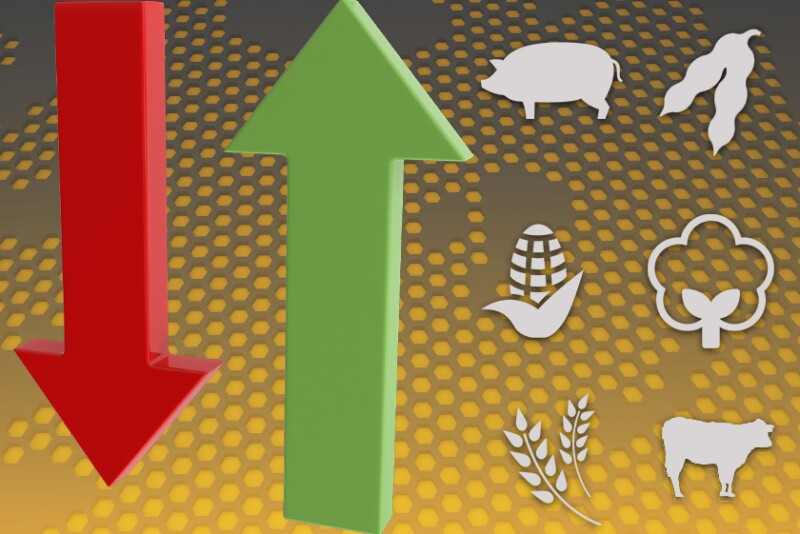GRAIN CALLS
Corn: Steady to 2 cents higher.
Soybeans: 9 to 12 cents higher.
Wheat: 1 to 8 cents higher.
GENERAL COMMENTS:
Corn futures were little-changed to slightly firmer in narrow-range overnight trade, while soybean and wheat futures traded higher. Malaysian palm oil futures rose over 1% and Nymex crude oil futures also climbed over 1%. The U.S. dollar index is up more than 350 points this morning.
USDA reported a daily soybean sale of 131,000 MT to China for 2021-22. That follows a 300,000 MT soybean sale to unknown destinations for 2021-22 that was announced on Thursday.
The U.S. added a greater than expected 943,000 non-farm jobs in July and the unemployment rate fell to 5.4%, the Labor Department reported today. Economists expected non-farm payroll growth closer to 800,000 to 845,000. Stronger job growth indicates the economy’s recovery from the Covid-19 pandemic is gaining momentum, a bullish signal for commodity demand generally, though the July employment figures may not reflect escalating concerns over the Delta virus variant.
Antrhrax was reported in cattle in a Kidder County, North Dakota, beef herd earlier this week. The state’s agriculture officials are warning producers to monitor their herds and check with veterinarians to see if they should begin vaccinating their cattle. Two cases of anthrax were reported in North Dakota last year, and in 2005 around 1,000 head were thought to be lost due to the disease.
Argentina’s wheat crop was damaged by bad weather the past two weeks, according to the Buenos Aires Grain Exchange, but damage was not enough to prompt a cut to its 19 million metric tons (MMT) crop estimate for 2021-22.
France’s wheat farmers harvested 66% of their soft wheat crop as of Aug. 2, up from 47% the previous week but behind the 97% harvested last year at this point. Harvest has been slowed by late-season rains that have also sparked concerns about crop quality.
China sold 26,447 MT of GM corn from the U.S. at its latest auction of state reserves, representing 12% of the total volume. In a separate auction, 12,962 MT of reserve non-GMO corn from Ukraine was sold — 26% of the total offer.
CORN: December futures overnight traded within this week’s range between Monday’s low of $5.40 3/4 and Tuesday’s high of $5.65 1/4, and were on track to close above last week’s settlement of $5.45 1/4. But stochastics and the RSI are neutral to bearish, indicating sideways to lower prices near-term. A closed below the July 26 low at $5.32 1/4 would confirm a downside breakout of the recent trading range, which could lead to a test of July’s low at $5.07.
SOYBEANS: November soybeans held within this week’s range between Monday’s high at $13.59 and Tuesday’s low at $13.08 3/4 and absent an extension of overnight gains, were poised to close below last week’s settlement of $13.49 1/4. Stochastics and the RSI are oversold but remain neutral to bearish, signaling sideways to lower prices near-term. If November extends its decline off the July 19 high, last month’s low of $13.00 1/2 is the next downside target.
WHEAT: September SRW futures fell as low as $7.09 1/4 overnight before recovering. Stochastics and the RSI are overbought and are turning neutral to bearish and indicate prices will trade sideways to lower near-term. September SRW is still up from last week’s close at $7.03 3/4.
CATTLE: Steady-firmer
HOGS: Steady-firm
CATTLE: Cattle futures will look to bounce back from Thursday’s losses amid firm cash fundamentals. Choice cutout values rose $3.50 yesterday to $289.34, the highest since late June, USDA data showed. Choice cutout values have gained for 12 straight days. Live steers yesterday averaged $123.67, up from last week’s average of $121.68. Soaring beef prices have strengthened packer profit margins, which rose to $623.50 a head as of yesterday, according to HedgersEdge.com.
HOGS: Hog futures may find support after yesterday’s plunge if wholesale pork markets show signs of stabilizing after a steep drop mid-week. Lean hogs will trade with expanded limits of $4.50 today. Pork cutout values sank $4.68 Wednesday before rising 13 cents yesterday, to $123.12, still a decline of nearly 4% over the past two days, USDA reports showed. The wholesale market weakness contradicted expectations that climbing beef prices would accelerate grocer demand for cheaper pork.

